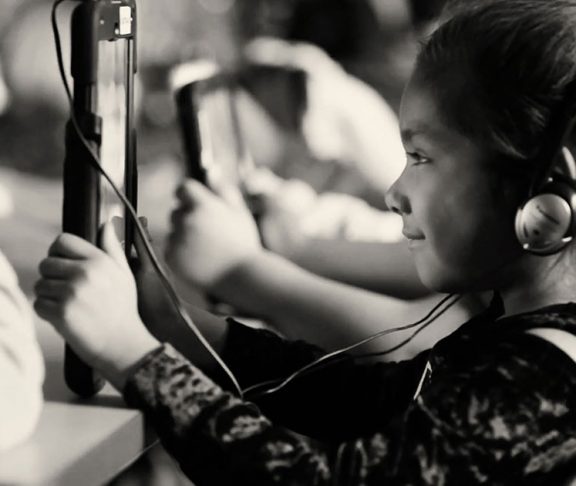Horace Mann once coined the phrase, “Education is the great equalizer.”As such, language is its foundation; the foundation of all learning. While it’s important to develop language skills at a young age, not all students have the same access and exposure to acquire the fundamental language skills needed to be successful in school and daily life. That’s changing and technology is helping close the gap.
Researchers have documented that during preschool years, children living in poverty are often exposed to lower quality and lower quantity language learning environments1. According to literacy nonprofit Reading Is Fundamental, 34 percent of kids entering kindergarten lack the basic language skills needed to read. In the most recent Nation’s Report Card only 35 percent of fourth graders were proficient in 2019, down from 37 percent in 2017. Students who are not proficient readers in the third or fourth grade are at high risk of dropping out of school. Poor reading ability has detrimental effects for future income, employment opportunities, and participation in society.
“We are passionate about providing equity of access to learning for all students through teaching with technology,” says Jeremy Cowdrey, president of Imagine Learning, a Pre K-8 digital curriculum company. “We believe every student has the right to fulfill their unique potential. Our goal is to meet students where they are and provide educators with data-driven insights that inspire teaching and learning breakthroughs.”
The company started 15 years ago with the concept that language should be an asset to help kids reach their full potential. First, they offered a program to help kids learn the English language in context with developing both language and literacy skills.
Now, more than 3 million students across the country benefit from Imagine Learning programs daily. The adaptive suite of Literacy, Math, and Assessment solutions are powered by the Imagine Learning Language AdvantageTM—a theory of action that promotes rigorous and equitable development of language that enables students to have deeper comprehension, engagement, and enjoyment of learning.
Results
Imagine Literacy students are 1.8 times more likely to outperform their peers on state tests and Imagine Math students are 3 times more likely to be proficient on state tests. And while performance on state assessments is one benchmark of success, the Imagine Learning team is more proud to help teachers amplify confidence and inspire learning breakthroughs for their students.
Ten years ago, Meriden Public Schools in Meriden, Connecticut started using Imagine Language & Literacy for its bilingual programs. Since 2015, the program has been implemented in all of the district’s elementary schools.
“Imagine Learning programs are embedded into our core content,” says Mark D. Benigni, Ed.D., superintendent of Meriden Public Schools. “It’s part of what we do now.”
Since then, their Smarter Balanced Assessment third-grade reading proficiency is up 20 percent; student performance in the Smarter Balance Assessment is up 25.6 percent; and there’s a 35 percent increase in students scoring Level 4, the highest standard, on the assessment.
Personalized approach
The technology is a supplement, not a replacement for the teacher. And it can both support and improve the ways teachers help students learn.
For example, “Our programs recognize when a student is having trouble in a certain area, it flags that issue for the teacher and informs individualized instruction. The teacher can then provide one-on-one support to help that student understand the topic and advance,” says Cowdrey.
The programs also offer unique access to live teaching support both in and out of school from certified, bilingual teachers. This provides equitable educational opportunities to all students and aligns with national initiatives for us ed tech equity.
Urgency
The educational technology gamifies content, which is appealing and interactive for kids. Dr. Benigni says it’s a positive use of screen time.
“It’s a learning tool,” he says. “The careers of tomorrow are going to require our students to be digital learners. We would be remiss if we weren’t preparing them to live in a world where technology plays a key role.”
“There’s room for traditional learning and tech in the classroom. Both have to work in tandem to accelerate the learning for students,” says Emma Sanchez, retired principal and executive director of language acquisition and development for the Chula Vista Elementary School District, the largest elementary school district in California.
Sanchez believes there’s a sense of urgency too. “This is the responsibility of the entire educational community,” she says. “We all share this responsibility to ensure every learner’s academic success.”
1Chiang, Walsh, Shanahan, et al., 2017


